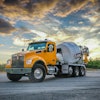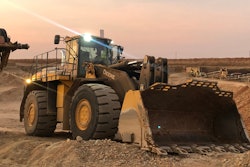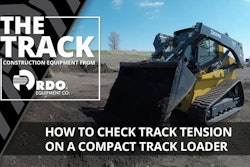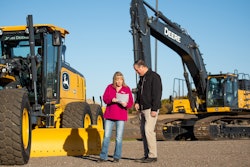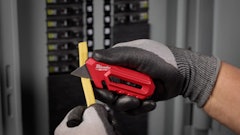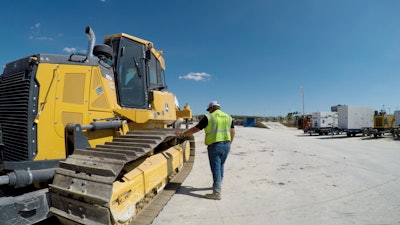
The days are longer. The workdays are busier. After more than 25 years in the equipment industry, I still love this time of year.
There is always a lot of energy and enthusiasm in the Spring. Each day adds a few more minutes of daylight and productivity, and even in areas where seasonal factors are low impact, work tends to ramp up after slowing down during the winter.
Spring also presents a great time for spring cleaning, but not the typical spring cleaning that likely just came to mind.
Spring Cleaning a Fleet
By this time, most companies have done annual machine inspections and service, and it is now a great time for equipment managers to do their own version of spring cleaning with their fleet.
The used equipment market is hot. New machines are tougher to get and uncertainty is still looming from the pandemic – a combination that results in demand for quality, pre-owned machines being high right now. Auctions are ramping up and, while they are not seeing the pre-pandemic volume of used machines, the prices they are selling for are high. It is a trend that looks to continue throughout 2021. This puts owners in prime position to sell used equipment.
Is it time to replace older equipment? Is that trusty, reliable machine no longer up to the task of being a dependable workhorse? Based on what the outlook is for the year, are there any machines that do not look to be busy enough to justify keeping them around?
When a fleet has been analyzed and it is decided the time is right to sell an older machine, companies have several avenues to do so. Three of the most common are sell or trade-in to an equipment dealer, working with an auction company and direct sale to a buyer.
This begs the question: which avenue should I choose? Thinking a bit deeper, the choice is also dependent on another question: which process is right for me?
First Things First
Before looking at the process behind each option and choosing the avenue to sell, it is a good idea to do some homework. Sellers must get expectations in check and see what, if any, investment is worth putting into the equipment to upgrade or repair before it is ready for sale.
There are a few ways to get a good idea of what the machine is worth and set a realistic expectation for price. A good place to begin is reviewing recent auction results to see at what prices similar equipment sold. Online retail pricing is significantly inflated but worth looking at if the machine is newer or low hour, as it can offer a baseline.
In addition to the value, take the time to research and consult with a used equipment professional to determine what, if any, repairs or upgrades are necessary and worth the investment. There are obvious fixes that must be done, such as if the machine has a major component problem that does not allow proper function or performance. The more questionable factor to weigh is if the market value diminished more than the repair value.
For example, it may cost $5,000 to rebuild an undercarriage but if that has a $20,000 market value implication, it is worth the time and investment to do so. Keep in mind a potential buyer will always assume repair costs on the high end.
A final option is to hire an appraiser. One of the more accurate ways to find out a machine’s worth, appraisers offer value in one of three ways: orderly liquidation value (OLV), forced liquidation value (FLV), and retail. OLV is applicable to what we are discussing here – an owner choosing to sell and having the time to do so to accommodate a typical sales process. It considers all the avenues of a sale to determine the highest reasonable value. Another way to think of it is fair market value.
Speaking of potential buyers, here is a look at each of the three main avenues and key considerations of each.
Equipment Dealer
Two options are common when working with an equipment dealership to unload a machine: trade-in or outright sell.
A trade-in is one of the easiest ways to unload a machine and a great option for those looking to purchase another machine, whether a similar replacement or even something different. A dealership will typically offer a good price, too, and put the dollars toward the new machine purchase.
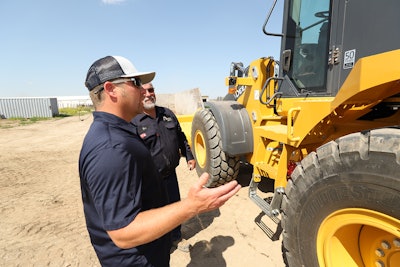 A trade-in is one of the easiest ways to unload a machine and a great option for those looking to purchase another machine.RDO Equipment
A trade-in is one of the easiest ways to unload a machine and a great option for those looking to purchase another machine.RDO Equipment
A big advantage that comes with selling or trading in to an equipment dealership is that a machine can be in virtually any condition. While a private buyer may be scared off by repairs or upgrades needed, equipment dealers have access to parts and skilled, certified service technicians, making them much more poised to take a machine that needs some work.
Additional advantages of working with a dealer partner is the sell or trade-in process is usually quick and headache-free. The seller knows the price he or she will receive, and it opens the door to a long-term relationship, both from a selling and a buying or renting standpoint.
The downside of working with a dealership is everything is pretty cut and dry. Sellers who are willing to take more risk to try to fetch a higher price may want to consider the option of an auction or even direct to a buyer.
Auction
When working with an auction, perhaps the biggest advantage is the guarantee that the machine is going to sell and bring in cash. There is no question, as long as it is an absolute auction company. The timeline is also guaranteed, as sellers know upfront when the machine is going to go to auction.
Another advantage of selling at auction is participants have the expectation of buying as-is. That means if there are problems with the machine, the seller may choose not to fix and there is no ethical obligation or concerns of misrepresentation.
The biggest risk when working with an auction is the final selling price. This goes back to the advice of doing homework, reviewing recent auction prices to get a realistic idea of what price the machine will likely get. It is an advantage for those who are open to rolling the dice and believe the risk is worth the potential reward.
Some auction companies also offer an option to sell equipment with them using a buy now process. This gives the seller an advantage of knowing what he or she will get if it sells once the reserve, or minimum amount the seller is willing to accept, is set. In this case, the machine may not sell if the reserve is too high. It is a good way to test the market for what is usually a reasonable fee.
Direct to End User
Selling directly to an end user is a great option if the machine for sale is in high demand or, better yet, a seller is aware of a potential buyer who is looking for the exact machine. This can mean not only is that there opportunity to sell for a full asking price if the demand is especially high and multiple buyers are interested, but the equipment may go for more than fair market value. Companies with a good network and strong relationships with other companies likely have a good pool of potential buyers and can use that to their advantage and greatly benefit from exploring this option.
If there is not a specific buyer or a good network of prospects, direct selling can pose challenges that a seller cannot – or is not willing to – handle. Marketing the equipment, price negotiating, showings and walkarounds and the total amount of time a sale can take are all potential drawbacks of selling direct.
Any upgrades or repairs needed may be a deal breaker for a buyer if he or she believes the work will be too much to handle or too costly to hire out. And remember, buyers will always assume the high end when pricing repair costs.
With the popularity of used equipment expected to remain high this year, it may be the best time to sell those machines that no longer have a strong place in the fleet. Those who are taking a spring cleaning approach to their fleet should also take time to do some homework and explore all avenues to be in the best position to snag top dollar.




